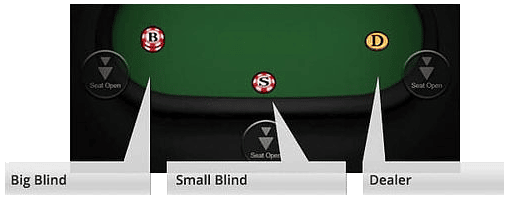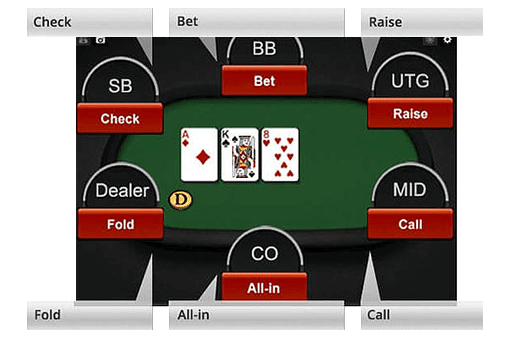How to Play Omaha Poker
If you’re new to the game of poker or want to master another variant aside from Texas Hold’em, understanding the rules and format of Omaha poker is important.
Omaha poker is similar to Texas Hold’em in most respects, apart from the crucial fact that it involves four hole cards private to each player, rather than two hole cards. After each community card reveal, players must decide whether to check, bet, raise or fold in order to form the most valuable five-card hand that includes exactly two hole cards. To learn more about the rules of poker, visit our poker school.
Types of Omaha Games
There are different types of Omaha poker, the two most popular of which are pot-limit Omaha and Omaha hi-lo. Variants of Omaha poker include:
- Omaha Hi: In this version, the highest five-card hand takes the pot. The pot limit betting structure means that crushing pre-flop all-ins are not possible.
- Omaha Hi-Lo: Hi-lo Omaha is a variation where the pot is split between the highest and lowest hands. The best possible hand is one in which the same player holds both the highest and lowest hands at the same time, thus winning the pot. The player with the best high hand takes half of the pot at showdown, while the player with the best low hand takes the other half. But in order to qualify as a low hand, the player must have five unpaired cards ranked 8 or below.
Omaha Rules
Omaha poker is the second most popular poker variant behind Texas Hold’em and is best played between two to ten players. The rules are as follows:
- One player is the dealer, with the small and big blind situated to the left of the button. Betting action proceeds clockwise around the table.
- Both the small blind and the big blind make forced bets and put money in the pot before the cards are dealt. Each player is then dealt four cards (holes) face down.
- Once the hole cards are dealt, the first round begins with the player sitting to the left of the big blind. Players must choose two of their four hole cards when forming the best hand possible; no more, no fewer, exactly two hole cards must be used in Omaha.
- With each turned community card a round of betting proceeds. Players must choose whether to bet, raise or fold each round. This begins with the flop, where a card is burnt and three community cards are dealt face up.
- After the second round of betting comes the turn, where another card is burnt and a fourth community card is revealed. Another round of betting follows.
- The river follows where another card is burnt and a fifth and final community card is revealed. The final round of betting follows.
- Lastly comes the showdown. Using the best five-card combination of their hole cards and community cards, remaining players show their hands. The first bettor or last raiser must show their cards first.
The Blinds
Like Texas Hold’em, Omaha poker features forced bets called the ‘blinds’.
Blinds are a pair of bets – one small and one big – that are made before the cards are dealt and rotate around the table with the dealer. They are situated to the left of the dealer, with the small blind to the immediate left and the big blind found next to the small blind.
Both the small and the big blind constitute the starting pot which all other players bet against.


Player Betting Options
During each betting round, players must decide whether to check, fold, bet, call or raise. Which they opt for depends on the betting variant, with Omaha poker following into the following variants:
- Pot-limit Omaha: In this variation, the maximum amount that can be bet is the sum of the chips in the pot. The minimum bet is the same as the size of the big blind. If a player chooses to raise, he must raise at least the amount of the previous bet or raise in that same round.
- Fixed limit Omaha: With fixed limit Omaha, a pot can only be raised a maximum of four times and the bet or raise must be equal to the size of the blinds. Betting is in pre-determined, structured amounts.
- No limit Omaha: No limit Omaha is the most aggressive variant available. The minimum bet in no-limit is the same as the size of the big blind, but players can bet or raise as much as they desire and at any point during the betting
Start of the Game (Pre-Flop and the Flop)
Once a player has received their hole cards, they can play their hand by calling or raising the big blind. The first action begins to the left of the big blind. Once they have decided to call, raise or fold, the action proceeds clockwise around the table. Betting continues on each betting round until all players have placed equal bets into the pot.

After the first round of betting, the flop is dealt face-up on the board. The flop includes the first three community cards.

Another round of betting follows.
During the Game (The Turn and the River)
Once a round of betting has concluded post-flop, the turn is dealt face-up on the board. The turn is the fourth community card. Play begins once again with the active player clockwise from the button. In fixed-limit Omaha, bets and raises on the turn are in increments of the big bet.

Once the turn is complete, the river is dealt face-up on the board. The river is the fifth and final community card in Omaha poker.

The final round of betting begins with the active player immediately clockwise from the button.
End of the Game (The Showdown)
When the final betting round is complete, the remaining active players must show their cards. If there is more than one remaining player, the last person to bet or raise will show their hand. If no bets take place during the final round, the player who is immediately clockwise from the button must show their hand first.

Once all hands have been shown, the player with the best five-card hand is named the winner. In the event of identical hands, the pot will be equally divided between the players with the best hands.
Recap
The game begins with four hole cards that are private to the player and then a series of betting rounds proceed, during which various community cards are revealed face-up. The aim is for players to form the strongest five-card hand using exactly two of their hole cards and three community cards, and then judge whether to call, raise or fold according to what they feel will do best against opponents. The game finishes when the player with the most valuable five-card hand is deemed the winner.
GGPoker House Rules
GGPoker allows players to play at multiple tables or in multiple games simultaneously. When entering a cash table, players must pay a fee that’s equal to that table’s lower limit stake or small blind. A player may also choose to temporarily sit-out from a poker table. In the event that two or more active players reach showdown when holding equal ranking hands, the winner is determined by card value, or the kicker if the hands remain tied.
